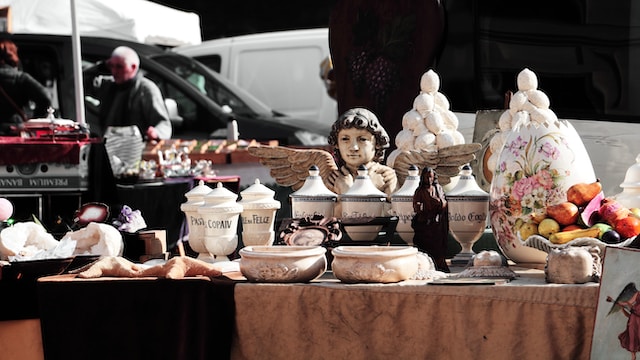
Unnoticed corners of your home often hide forgotten treasures, items that have been collecting dust for years. These neglected belongings can hold unexpected value, both sentimental and monetary. In this guide, we will explore how to give these items a new purpose by transforming them into extra income. Whether it’s vintage collectibles, electronics, or even clothing, this process can be both rewarding and eco-friendly. Let’s dive into the art of turning clutter into cash with practical tips and strategies to ensure your selling journey is a successful one.
Identifying Items Worth Selling:
When sifting through your belongings, it’s essential to assess the potential value of your items before listing them for sale. Look for products that are desirable and in good shape, such as collectibles, antiques, or well-liked technology. If you happen to possess vintage toys like Transformers G1 toys, these could hold significant value to collectors. In such cases, researching similar listings and consulting experts can help determine their market worth, ensuring you make the most of your selling efforts.
Preparation for Selling:
To effectively prepare your items for sale, a series of key steps should be taken. Begin by meticulously cleaning and, if necessary, repairing your items to enhance their overall appeal to potential buyers. Proper cleaning and maintenance are essential for making a strong first impression. Subsequently, invest time in capturing clear and well-lit photographs of your items, ensuring you present them from various angles to provide a comprehensive view. Equally important is crafting detailed and accurate item descriptions, including dimensions, brand names, and any notable features or historical background. These aspects play a pivotal role in engaging potential buyers and building trust by providing a comprehensive understanding of the item they intend to purchase.
Choose the Right Platform:
Selecting the appropriate platform for selling your items is a crucial decision in your selling journey. Online markets are well-liked choices for a variety of goods, such as eBay, Craigslist, or Facebook Marketplace. Each platform has its advantages and can accommodate various merchants and shoppers. Specialized websites or forums can be advantageous when dealing with niche or collectible items, as they attract a more targeted audience with a specific interest. If you prefer a more local approach, participating in garage sales, flea markets, or consignment shops can be a fruitful option, especially when dealing with larger or challenging-to-ship items. Choosing the right platform aligns with the nature of your items and the audience you aim to reach, significantly influencing your selling success.
Pricing Strategies:
Effective pricing is fundamental to a successful sale. Start by researching the current market prices for similar items, enabling you to set a competitive and reasonable asking price. The price should reflect factors such as the item’s condition and overall demand. Decide between auction-style listings, where buyers bid competitively, or fixed prices, offering more predictability for buyers. Creating bundle deals for related items can be an enticing strategy, providing buyers with added value and encouraging them to make multiple purchases. Your pricing strategy should align with your goals as a seller, balancing competitiveness and profitability while accommodating the expectations of potential buyers.
Marketing and Promotion:
After creating your listings, the next vital step is to focus on marketing and promotion to maximize visibility and attract potential buyers. Craft compelling titles for your listings, utilizing descriptive keywords to enhance discoverability. Use pertinent keywords in the item descriptions to raise your rating on search engines. High-quality images showcasing your items in detail are essential, as they significantly impact a buyer’s decision-making process. A thorough picture is provided by numerous images taken from different perspectives. Utilize the marketing tools provided by the platform, such as promoted listings or advertising options, to increase your items’ visibility.
Communicate with Potential Buyers:
Effective communication with potential buyers plays a pivotal role in the selling process. It’s essential to respond promptly to inquiries, as quick and informative replies can significantly influence a buyer’s decision to make a purchase. Honesty is key when addressing questions or concerns about the item. Be open and honest about the item’s history, condition, and any other pertinent information. Engaging in negotiations is often part of the selling process, so be prepared to discuss pricing and other terms while maintaining professionalism and courtesy. Setting clear boundaries and knowing your minimum acceptable price is important to avoid underselling your items. Successful communication fosters trust and can ultimately lead to successful transactions and satisfied customers.
Conclusion
By learning how to sell those items in your home that have been collecting dust, you’ve not only decluttered your living space but also potentially increased your financial well-being. The process of identifying, preparing, and marketing your items, along with effective communication and strategic pricing, can lead to successful transactions and satisfied customers. As you continue to embark on this journey, remember that the key lies in recognizing the value that once-forgotten items can bring to your life, both in terms of a tidier living environment and the additional income you can generate.


